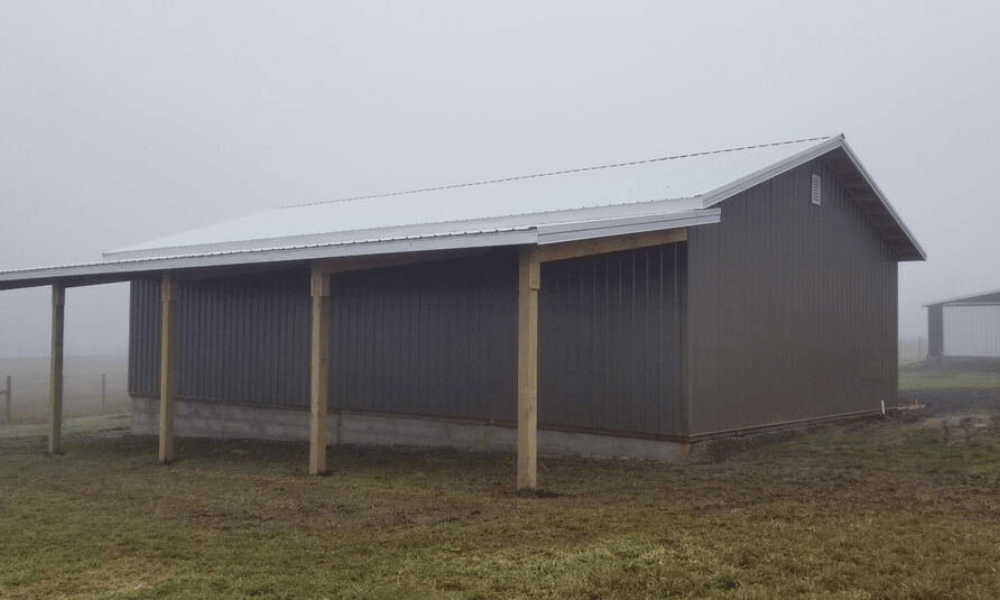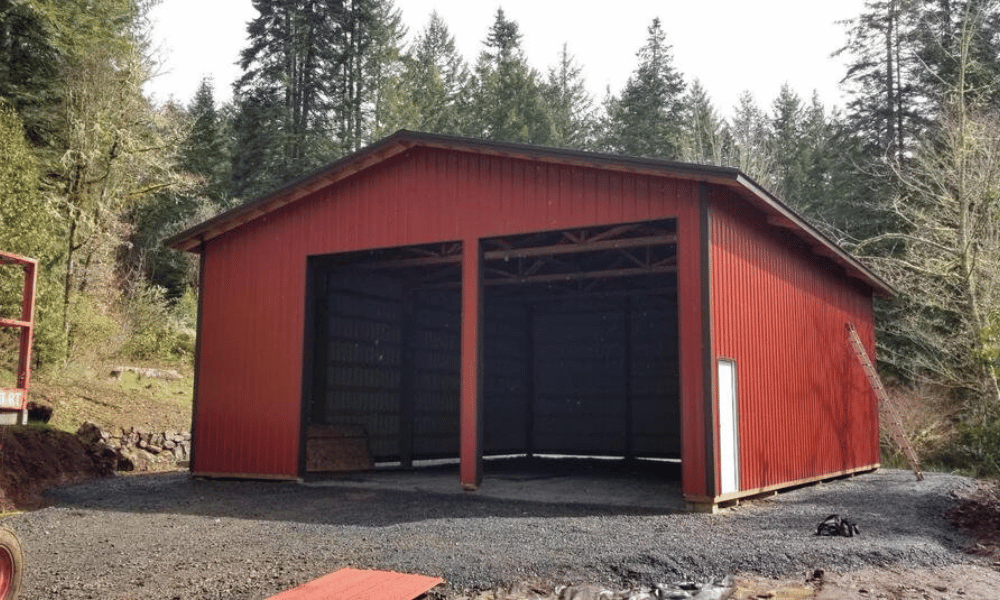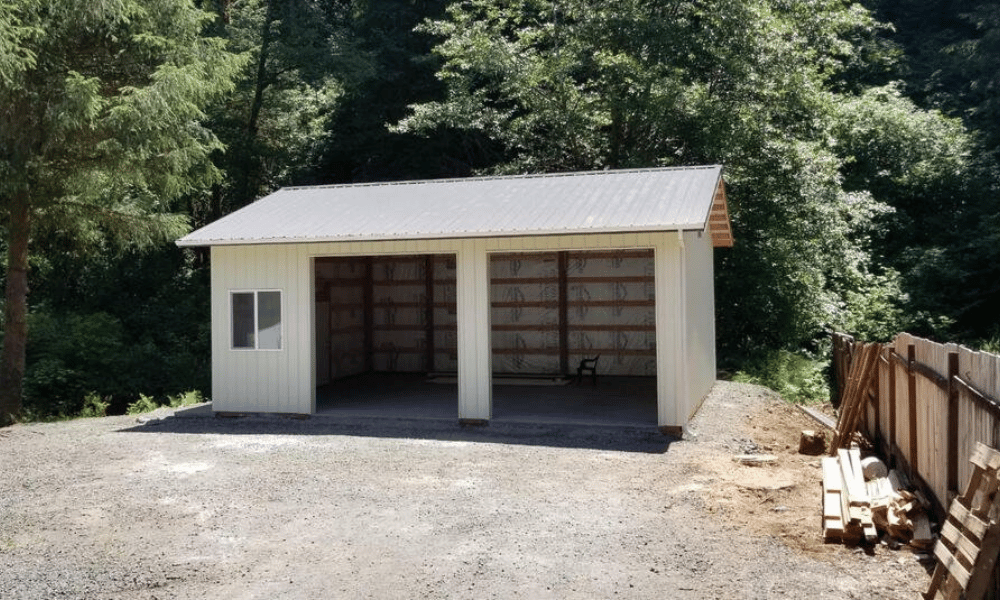Introduction
Creating safe pasture access from your livestock barns is not just a matter of convenience; it’s a crucial aspect of animal husbandry that ensures the safety and well-being of your livestock. As farmers and livestock owners, we bear the responsibility to provide our animals with access to grazing areas while minimizing risks associated with pasture access. This article will delve deep into the intricacies of designing effective pasture access points, ensuring safety for both animals and humans involved in the agricultural process.
Understanding the Importance of Safe Pasture Access
Livestock require regular access to pastures for grazing, exercise, and socialization. However, without proper planning, this can lead to accidents or injuries. Creating safe pasture access involves considering various factors, including terrain suitability, fencing options, and structural integrity of pole buildings serving as barns.
What Are Pole Buildings?
Pole buildings are structures supported by poles or columns rather than traditional foundations. They offer flexibility in design and can be customized according to specific needs. In the context of livestock management, pole buildings serve as excellent barns due to their spacious interiors and cost-effective construction methods.
The Design Process: Key Considerations
1. Assessing Your Land Layout
Before diving into construction or renovation projects, take stock of your land layout. Ask yourself:
- Is there enough space between your barn and pastures? What is the topography like? Are there any natural barriers?
By understanding these elements, you’ll lay a solid foundation for creating safe passageways.
2. Choosing Suitable Locations for Access Points
Access points should be strategically located to minimize stress on animals during movement between barns and pastures. Consider placing gates near feeding areas or water sources for easier transitions.
3. Evaluating Weather Conditions
Weather plays a significant role in how livestock react to pasture access. Heavy rains can create muddy conditions that may lead to slips and falls if not adequately managed.
Creating Safe Pasture Access from Your Livestock Barns
Designing effective pasture access from your barns requires thoughtful planning. Here are essential steps involved in creating these pathways:
4. Implementing Proper Fencing Solutions
A well-designed fencing system ensures that livestock stay within designated areas while preventing potential escapes or injuries from surrounding hazards.
Types of Fencing: Pros & Cons
| Type | Pros | Cons | |------------------|----------------------------------------|--------------------------------| | Wood Fencing | Durable & aesthetic | High maintenance | | Electric Fencing | Flexible & economical | Requires regular checks | | Barbed Wire | Cost-effective | Can cause injuries if not managed properly |
5. Selecting Appropriate Gate Designs
Gates are critical components of safe pasture access systems; they should be easy to operate yet secure enough to withstand the strength of larger animals.
Popular Gate Types: An Overview
- Swing Gates: Simple but may require extra space. Sliding Gates: Space-saving but need tracks installed.
The Role of Pole Buildings in Safety Management
Pole buildings not only serve as functional barns but also contribute to overall safety in managing livestock movements.
6. Ensuring Structural Integrity
Regular inspections of pole buildings are essential for maintaining safety standards:
- Look for signs of rot or pest infestations. Check for loose boards or structural weaknesses.
Creating Designated Pathways Between Barns and Pastures
7. Pathway Materials: Choosing Wisely
The choice of materials can significantly affect the durability and safety of pathways leading from barns to pastures:
- Consider gravel paths for drainage. Concrete surfaces may be too slippery when wet but offer durability.
8. Designing Effective Drainage Systems
Proper drainage systems prevent water accumulation that could create hazardous conditions:

- Install ditches along pathways where necessary. Utilize French drains around barn entrances.
Animal Behavior: Understanding Movements Towards Pasture Access
9. Recognizing Signs of Stress During Movement
Animals may exhibit signs of stress https://jsbin.com/qibogelupe when moving toward pastures if pathways are poorly designed or overcrowded:
- Watch out for excessive vocalizations. Monitor body language closely—anxious animals may try to escape en route.
10. Training Livestock For Smooth Transitions
Training your livestock helps ensure calm movements between barns and pastures:
- Use positive reinforcement techniques.
Safety Protocols During Pasture Access Operations
11. Personal Safety Measures for Handlers
Handlers must follow strict safety protocols when moving animals towards pastures:
- Wear appropriate footwear resistant to slipping.
Table: Safety Checklist for Handlers
| Item | Description | |--------------------------|------------------------------| | Non-slip Footwear | Essential for stability | | Protective Gloves | Prevent injuries | | First Aid Kit | Immediate response tool |
Utilizing Technology in Managing Pasture Access
12. Digital Mapping Systems
Advanced technologies like GPS mapping can improve management efficiency by clearly marking safe zones within fields used for grazing activities.
FAQ Section
FAQ 1: Why is it important to have safe pasture access?
Safe pasture access is crucial as it minimizes risks such as injuries during animal movement while ensuring efficient grazing practices that promote animal health.
FAQ 2: How often should I inspect my barn's structure?
Regular inspections (at least twice a year) help identify potential issues before they escalate into serious problems affecting animal welfare or safety.

FAQ 3: What type of fencing works best with different livestock?
Different types work better with specific animals; electric fencing is often recommended for cattle while wooden fences suit horses due to their sturdiness.
FAQ 4: Can I train all types of livestock equally?
Training approaches vary based on species; cattle require different techniques compared to sheep or goats due mainly due behavioral differences inherent among them.

FAQ 5: How do I know if my drainage systems need upgrading?
Signs like standing water after rainstorms indicate poor drainage systems requiring assessment; regularly check these areas following heavy rains!
FAQ 6: Are there legal regulations regarding pasture access I should know about?
Yes! Local zoning laws may dictate specific requirements regarding land use practices including those related specifically towards maintaining adequate fences/gates etc., so consult local authorities beforehand!
Conclusion
Creating safe pasture access from your livestock barns is an ongoing responsibility that combines knowledge, experience, and attention to detail. By assessing land layouts carefully, choosing appropriate fencing solutions, training livestock effectively, implementing technology wisely—all while ensuring structural integrity—you’ll enhance not only their quality-of-life but also safeguard operational efficiency within agricultural practices overall! Remember always prioritize animal welfare alongside economic benefits derived from successful management strategies employed throughout this process!